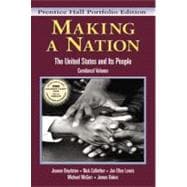
(NOTE: Volume I includes Chapters 1-16 and Volume II includes Chapters 16-31. All chapters also include a Web Connection box, a History on the Internet section, and a Special Feature box. All chapters conclude with a Conclusion, Chronology, Review Questions, and Suggestions for Further Readings.)
1. Worlds in Motion, 1450-1550.
Combined
The New copy of this book will include any supplemental materials advertised. Please check the title of the book to determine if it should include any access cards, study guides, lab manuals, CDs, etc.
The Used, Rental and eBook copies of this book are not guaranteed to include any supplemental materials. Typically, only the book itself is included. This is true even if the title states it includes any access cards, study guides, lab manuals, CDs, etc.